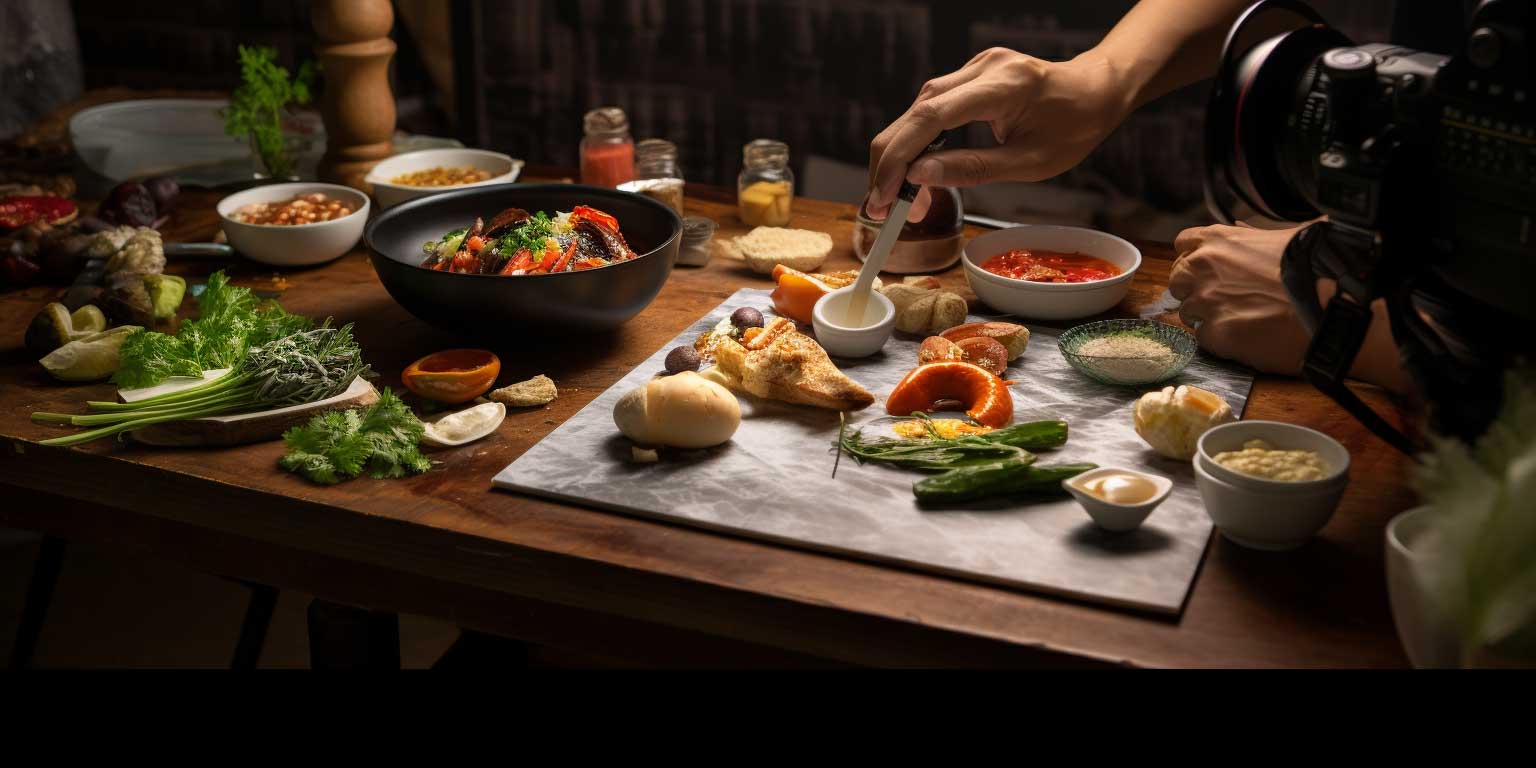Mastering Food Styling: Tips and Tricks for Picture-Perfect Plates

Food styling is an art form that has taken the culinary world by storm. In the age of social media and food blogging, capturing the perfect shot of your delectable creations is essential to entice and engage your audience. Whether you are a professional chef or an amateur food enthusiast, mastering food styling can elevate your dishes from mere sustenance to works of art. In this blog, we will explore the tips and tricks that will help you create picture-perfect plates that not only look enticing but also taste as good as they appear.
1. Start with Fresh and Quality Ingredients: The foundation of any great dish lies in the quality of its ingredients. Fresh, vibrant produce can naturally enhance the visual appeal of your dishes. Choose seasonal ingredients whenever possible, as they not only taste better but also add a touch of authenticity to your photographs.
2. Understand Colors and Compositions: Colors play a crucial role in food styling. Consider the color wheel and complementary colors to create visually striking arrangements. Contrasting colors can make specific elements of your dish pop, drawing the eye to the focal point of the plate.
3. Pay Attention to Plate Selection: The right choice of plates can make a significant difference in how your food is perceived. Opt for simple, neutral-colored plates that won’t distract from the food itself. White plates are classic and allow the colors of your dishes to shine.
4. Mindful Portioning: Portioning your food thoughtfully is essential for balanced and visually appealing plates. Avoid overcrowding the plate and leave enough negative space to let the dish breathe.
5. Utilize Props Wisely: Props can add context and depth to your food photographs. However, use them sparingly and purposefully. Fresh herbs, cutlery, and table napkins are common props that can enhance the overall composition.
6. Play with Textures: Incorporate various textures in your dishes to create visual interest. Crispy toppings, creamy sauces, and tender meat can add a dynamic dimension to the photograph.
7. Understand Lighting Techniques: Lighting is the single most critical factor in food photography. Natural light is often the best option, as it highlights the natural colors and textures of the food. Position your dish near a window or utilize diffused light for soft shadows.
8. Find the Right Angle: Experiment with different angles to find the one that best showcases your dish. Overhead shots can work well for flat-lay compositions, while a 45-degree angle can add depth and dimension.
9. Capture the Cooking Process: Include photographs of the cooking process to tell a visual story. Shots of ingredients being prepared and dishes being plated can create a more immersive experience for your audience.
10. Mindful Editing: Post-processing is a crucial step in food styling. Use photo editing software to enhance colors, adjust brightness, and sharpen details. However, avoid over-editing, as it can make the image look unrealistic.
11. Embrace Imperfection: While food styling is about creating visually stunning plates, don’t be afraid to embrace imperfections. Some of the most captivating food photographs are those that capture the natural messiness of cooking.
12. Stay True to Your Style: Develop your unique food styling style that reflects your personality and culinary vision. Consistency in style will help your audience recognize your work and develop a sense of connection with your brand.
13. Seek Inspiration and Learn Continuously: Follow food stylists, photographers, and chefs on social media platforms to draw inspiration from their work. Take online courses and attend workshops to continuously improve your food styling skills.
14. Get Creative with Garnishes: Garnishes can take your food presentation to the next level. Experiment with fresh herbs, edible flowers, and citrus zest to add a burst of color and freshness to your dishes.
15. Consider the Background: The background of your food photograph is as important as the dish itself. Opt for simple, textured backgrounds that complement the dish without overshadowing it.
16. Tell a Story: Create a narrative around your dishes through food styling. A dish inspired by a particular cuisine or a family recipe can be more captivating when paired with a short anecdote.
17. Use Steam and Smoke: To add a touch of drama to your food photographs, use steam or smoke to make the dish appear freshly cooked. This technique can add a sense of urgency and allure to the image.
18. Capture Diverse Perspectives: Different dishes can look appealing from various angles. Experiment with different perspectives to find the one that best highlights the unique features of each dish.
19. Master the Art of Sauces and Drizzles: Sauces and drizzles can elevate the appearance of your dishes significantly. Invest time in learning the art of creating beautiful patterns and designs with sauces.
20. Practice and Patience: Food styling, like any other art form, requires practice and patience. Don’t get discouraged if your first attempts don’t turn out as you imagined. Keep experimenting and refining your skills over time.
In conclusion, mastering food styling is a blend of creativity, technique, and passion. The art of presenting food in an enticing manner requires a keen eye for detail and an understanding of the visual elements that make a photograph truly stunning. With the right ingredients, composition, lighting, and editing, you can create picture-perfect plates that not only wow your audience visually but also leave them eager to savor the flavors of your culinary masterpieces. So, roll up your sleeves, and let your creativity flow as you embark on your journey to becoming a food styling maestro. Happy styling!
